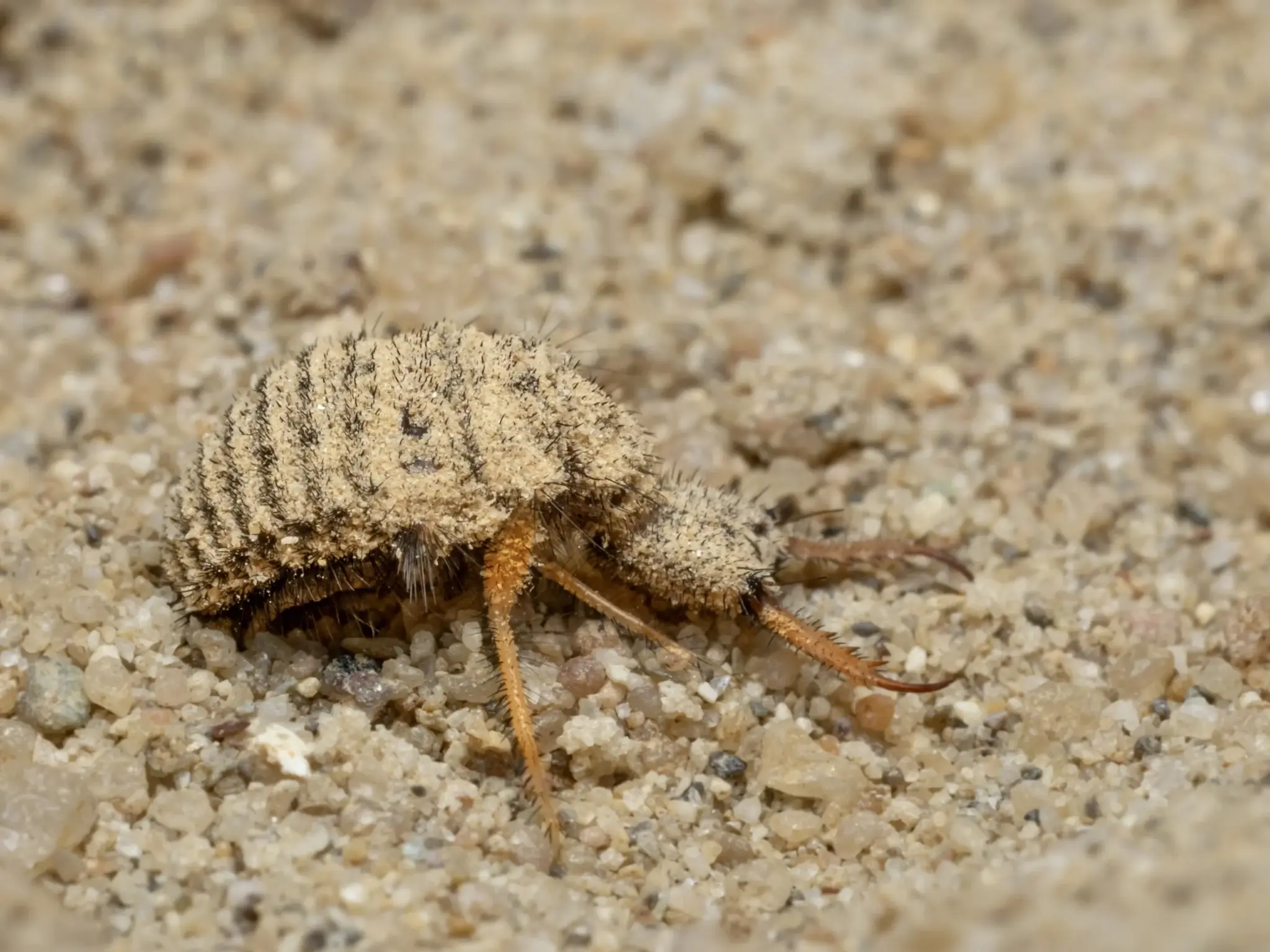About Antlions:
- Antlions are insects belonging to the order Neuroptera. They are classified in the family Myrmeliontidae.
- They are named for the predatory nature of the larvae, which commonly trap ants and other small insects in pits dug into the ground.
- Antlions are found throughout the world, primarily in dry, sandy regions.
- It is very difficult to spot them during the day and can be spotted at night near illuminated spots.
- Features:
- Adult antlions resemble damselflies, but they have softer bodies, a lacy wing pattern, and long clubbed antennae.
- The bodies of antlions are long and slender and grayish in color.
- The wings are generally clear, but some species have spots on their wings.
- Antlions are weak fliers and can be found at night near lights.
- They come in various shapes and sizes, with larvae typically measuring from a few millimeters to several centimeters, depending on the species.
- Antlion larvae have rounded bodies with long sickle-shaped jaws. The larvae are found at the base of cone-shaped pits in sandy areas.
- They usually remain in the larval stage for one to two years, depending on the species.
- Once they pupate, they require up to one month to complete their development. Adult antlions survive for one to two months.
- Antlions are harmless and cause no damage to flowers, people, or structures.
- They are highly beneficial and feed on ants and other insects that fall into their traps.
What is Palpares contrarius?
- It is a large-sized adult antlion.
- Though it looks like a dragonfly, it has an antenna and a distinct fluttering flight, which separates it from them.
Q1: What is antennae?
The antennae are a pair of sense organs located near the front of an insect’s head capsule. Although commonly called “feelers”, the antennae are much more than just tactile receptors. They are usually covered with olfactory receptors that can detect odor molecules in the air (the sense of smell). Many insects also use their antennae as humidity sensors, to detect changes in the concentration of water vapor. Mosquitoes detect sounds with their antennae, and many flies use theirs to gauge air speed while they are in flight.
News: Rare antlion species resembling dragonfly spotted
Last updated on June, 2025
→ UPSC Notification 2025 was released on 22nd January 2025.
→ UPSC Prelims Result 2025 is out now for the CSE held on 25 May 2025.
→ UPSC Prelims Question Paper 2025 and Unofficial Prelims Answer Key 2025 are available now.
→ UPSC Calendar 2026 is released on 15th May, 2025.
→ The UPSC Vacancy 2025 were released 1129, out of which 979 were for UPSC CSE and remaining 150 are for UPSC IFoS.
→ UPSC Mains 2025 will be conducted on 22nd August 2025.
→ UPSC Prelims 2026 will be conducted on 24th May, 2026 & UPSC Mains 2026 will be conducted on 21st August 2026.
→ The UPSC Selection Process is of 3 stages-Prelims, Mains and Interview.
→ UPSC Result 2024 is released with latest UPSC Marksheet 2024. Check Now!
→ UPSC Toppers List 2024 is released now. Shakti Dubey is UPSC AIR 1 2024 Topper.
→ Also check Best IAS Coaching in Delhi






















